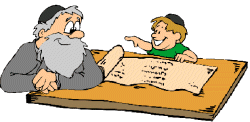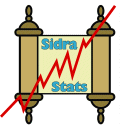Massey
מַסְעֵי
Numbers 33:1 – 36:13
Journeys
These are the journeys of the Israelites, who had left Egypt in organized groups under the leadership of Moses and Aaron.
Moses recorded their stops along the way at HaShem’s command. These were their stops along the way:
The Israelites left Ra’meses on the 15th of the first month. On the day after the Passover [sacrifice] the Israelites left triumphantly before the eyes of the Egyptians. Egypt was still burying all their first-born, who had been killed by HaShem, and HaShem had destroyed their idols.
The Israelites left Ra’meses and camped in Sukkoth.
They left Sukkoth, and camped in Etham at the edge of the desert.
They left Etham, and returned to Freedom Valley facing Lord-of-the-North, camping near Tower.
They left Freedom Valley and crossed the Red Sea toward the desert. They then traveled for three days in the Etham Desert and camped in Marah.
They left Marah and came to Elim. In Elim there were twelve water springs and seventy palms, and they camped there.
They left Elim and camped near the Red Sea.
They left the Red Sea and camped in the Sin Desert.
They left the Sin Desert and camped in Dofkah.
They left Dofkah and camped in Alush.
They left Alush and camped in Rephidim, where there was no water for the people to drink.
They left Rephidim and camped in the Sinai Desert.
They left the Sinai Desert and camped in Graves-of-Craving.
They left Graves-of-Craving and camped in Chatzeroth.
They left Chatzeroth and camped in Rithmah.
They left Rithmah and camped in Rimmon Peretz.
They left Rimmon Peretz and camped in Livnah.
They left Livnah and camped in Rissah.
They left Rissah and camped in Kehelathah.
They left Kehelathah and camped at Mount Shefer.
They left Mount Shefer and camped in Charadah.
They left Charadah and camped in Mak’heloth.
They left Mak’heloth and camped in Tachath.
They left Tachath and camped in Terach.
They left Terach and camped in Mithkah.
They left Mithkah and camped in Chashmonah.
They left Chashmonah and camped in Moseroth.
They left Moseroth and camped in Beney Yaakan.
They left Beney Yaakan and camped in Chor HaGidgad.
They left Chor HaGidgad and camped in Yatvathah.
They left Yatvathah and camped in Avronah.
They left Avronah and camped in Etzyon Gever.
They left Etzyon Gever and camped in Kadesh in the Tzin Desert.
They left Kadesh and camped at Hor Mountain at the edge of the land of Edom.
Aaron the priest climbed Hor Mountain at HaShem’s command, and he died there on the first day of the fifth month, in the 40th year of the Israelites’ exodus from Egypt.
When he died on Hor Mountain, Aaron was 123 years old.
Final Journeys
The Canaanite king of Arad, who lived in the Negev in the land of Canaan, heard that the Israelites had arrived.
They left Hor Mountain and camped in Tzalmonah.
They left Tzalmonah and camped in Punon.
They left Punon and camped in Ovoth.
They left Ovoth and camped in the Desolate Passes on Moab’s borders.
They left the passes and camped in Divon Gad.
They left Divon Gad and camped in Almon Divlathaymah.
They left Almon Divlathaymah and camped in the Avarim mountains in front of Nebo.
They left the Avarim mountains and camped in the West Plains of Moab on the Jericho Jordan.
There they camped along the Jordan from Beth HaYeshimoth to Avel Shittim on the West Plains of Moab.
Occupying the Land
HaShem spoke to Moses in the West Plains of Moab on the Jericho Jordan, telling him to speak to the Israelites and say to them: “When you cross the Jordan into the land of Canaan, you must drive out the land’s inhabitants ahead of you. You must destroy all their carved stones and demolish all their cast metal idols and high altars. Clear out the land and live in it, since it is to you that I am giving the land to occupy. It is by a lottery system that you shall distribute the land to your families. To a large family give a large portion; to a smaller one, give a smaller portion. Distribute the land to the paternal tribes, and each one shall have what the lottery system dictates. If you do not drive out the land’s inhabitants before you, those who remain shall be barbs in your eyes and thorns in your sides, causing you troubles in the land that you settle. I will then do to you what I originally planned to do to them.”
The Land’s Boundaries
HaShem spoke to Moses, telling him to give the Israelites instructions and say to them:
“When you come to the land of Canaan, this is the land within the borders of the land of Canaan that shall be your hereditary territory. Your southern sector shall begin in the Tzin Desert alongside Edom. The southern border to the east shall be the edge of the Dead Sea. The border shall then turn to pass to the south of the Akrabim Steps. It shall then pass toward Tzin with its southernmost point at Kadesh Barnea, and then extend to Chatzar Adar and reach as far as Atzmon. From Atzmon the border shall turn north and follow the Egyptian Wadi which shall be its far boundary to the west. The western boundary shall be the Mediterranean Sea and its shores. This shall be your western border. This shall be your northern boundary. From the Mediterranean Sea, draw a line to Hor Mountain. From Hor Mountain draw a line along the Chamath Highway, so that the extreme edge of the boundary is toward Tzedad. The border shall then extend through Zifron, with its extreme end at Chatzar Eynan. This shall be your northern border. For your eastern boundary, you shall draw a line from Chatzar Eynan to Shefam. The boundary shall then run southward from Shefam to Rivlah to the east of Eyin. Continuing to the south, the boundary shall run along the eastern shore of the Kinnereth Sea. The boundary shall then continue south along the Jordan, continuing until the Dead Sea. All these shall be your boundaries on all sides.”
Moses gave the Israelites the following instructions: “This is the land that HaShem commanded you to give to nine tribes and a half tribe, and which you must distribute as hereditary property through a lottery system.
However, the tribe of the Reubenite descendants, the Gaddite descendants, and half the tribe of Manasseh have already taken their hereditary property.
These two and a half tribes have already taken their hereditary property across the Jordan from Jericho, to the east. ”
New Leadership
HaShem spoke to Moses, saying: “These are the names of the men who shall parcel out the land. First, there shall be Eleazar the priest and Joshua son of Nun.
You shall also appoint one leader from each tribe to help parcel out the land.
These are the names of the men:
For the tribe of Judah, Caleb son of Yefuneh.
For the tribe of Simeon’s descendants, Shemuel son of Amihud.
For the tribe of Benjamin, Elidad son of Kislon.
For the tribe of Dan’s descendants, the leader is Bukki son of Yagli.
Among Joseph’s sons, for the tribe of Manasseh’s descendants, the leader is Chaniel son of Ephod.
For the tribe of Ephraim’s descendants, the leader is Kemuel son of Shiftan.
For the tribe of Zebulun’s descendants, the leader is Elitzafan son of Parnakh.
For the tribe of Issachar’s descendants, the leader is Paltiel son of Azzan.
For the tribe of Asher’s descendants, the leader is Achihud son of Shelomi.
For the tribe of Naphtali’s descendants, the leader is Pedah-el son of Amihud. ”
These are the people that HaShem commanded to distribute to the Israelites their hereditary property in the land of Canaan.
Levitical Cities
HaShem spoke to Moses in the West Plains of Moab on the Jericho Jordan, saying: “Give orders to the Israelites, and have them give the Levites residential cities from their hereditary holdings. Also provide the Levites suburbs around their cities.
The cities shall be their residence, while the suburbs shall be for their animals, property, and other amenities. The suburbs that you shall give the Levites shall extend outward 1000 cubits from the city wall. You shall measure off outside the city, 2000 cubits on the eastern side, 2000 cubits on the southern side, 2000 cubits on the western side, and 2000 cubits on the northern side. This shall constitute the city’s suburbs, with the city in the exact center. Along with the cities that you shall give to the Levites shall be the six refuge cities, which you shall provide as [places] to which a murderer can flee. Besides these [six] you shall provide an additional 42 cities. Therefore, the total number of cities that you shall give the Levites shall be 48 cities along with their suburbs. These cities shall be given from the holdings of the Israelites, more from a larger holding, and fewer from a smaller one. Each tribe shall therefore give the Levites cities in proportion to the hereditary property that it has been given.
Refuge Cities
HaShem spoke to Moses, telling him to speak to the Israelites and say to them: “Now that you are crossing the Jordan into the land of Canaan, you must designate towns which shall serve you as refuge cities to which a murderer, who killed a person accidentally, can flee. These cities shall serve you as a refuge from the avenger, so that a murderer not die until he can stand trial before the courts.
The towns that you provide for yourselves shall be six cities in all. As refuge cities, you shall provide three towns on [this] side of the Jordan, and three in the land of Canaan. These cities shall be a place of refuge for both proselytes and residents among the Israelites, so that anyone who accidentally kills a person shall be able to escape there. Of course, if one strikes his victim purposely with an iron weapon, killing him, then he is a murderer, and he must be put to death for murder.
Similarly, if he strikes with a hand-held stone that can be a deadly weapon, and the victim dies, he is a murderer and must be put to death for murder. Likewise, if he strikes with a deadly wooden hand weapon, and the victim dies, he is a murderer and must be put to death for murder. In such cases, after the trial, the blood avenger shall kill the murderer, and he can kill him wherever he finds him. The same law applies if the killer pushes down his victim or throws something down on him with hatred, causing the victim to die. This is also true if he maliciously strikes him with his hand, causing the victim to die. The person dealing the blow is a murderer and he must be put to death. Once he has been tried, the blood avenger shall kill him wherever he finds him. This is not true, however, if the killer pushes down his victim accidentally and without malice, or throws any object at him without planning to kill him.
Even if it is a stone that can kill, if he did not see the victim, and it killed him by falling on him, he is not a murderer, since he was not an enemy and did not bear his victim any malice. In such cases, the court shall follow these laws and judge between the killer and the blood avenger. The court shall protect the accidental murderer from the blood avenger, and return him to the refuge city to which he fled. The killer must live there until the death of the high priest anointed with the sacred oil.
If the killer goes outside the boundaries of the refuge city to which he fled, and the blood avenger finds him outside the borders of his refuge city, then if the blood avenger puts the killer to death, it is not an act of murder. The killer is thus obligated to live in his refuge city until the high priest dies. After the high priest dies, the killer may return to his hereditary land.
These shall be the rules of law for you for all generations, no matter where you may live. If anyone kills a human being, the murderer shall be put to death on the basis of eyewitness testimony. However, a single eyewitness may not testify against a person where the death penalty is involved. Do not take ransom for the life of a murderer who is under the death penalty, since he must be put to death. Similarly, if one has fled to his refuge city, do not take ransom to allow him to return and live in the land before the high priest dies.
Do not pollute the land in which you live; it is blood that pollutes the land. When blood is shed in the land, it cannot be atoned for except through the blood of the person who shed it. You must not defile the land upon which you live and in which I dwell, since I, HaShem, dwell among the Israelites. ”
Intermarriage Between Tribes
The paternal leaders of the family of Gilead, son of Makhir, son of Manasseh, came forth and spoke before Moses and the leaders who were the paternal heads of the Israelites.
They said, “HaShem has commanded you to give the land to the Israelites as hereditary property through a lottery system. You have also been commanded by HaShem to give the hereditary property of Tzelafchad our brother to his daughters. But if they marry a member of another Israelite tribe, then the hereditary property coming to us from our fathers will be diminished, since it will be added to the tribe into which they marry. Our hereditary property from the lottery system will thus be diminished. Even if the Israelites have the jubilee, their hereditary property will be added to the property of the tribe into which they marry, and it will be subtracted from the property of our fathers’ tribe.”
Moses gave the Israelites instructions at HaShem’s command, saying, “The tribe of Joseph’s descendants have a just claim. This is the word that HaShem has commanded regarding Tzelafchad’s daughters: You may marry anyone you wish as long as you marry within your father’s tribe. The hereditary property of the Israelites will thus not be transferred from one tribe to another, and each person among the Israelites will remain attached to the hereditary property of his father’s tribe. Thus, every girl who inherits property among the Israelite tribes shall marry a member of her father’s tribe. Each Israelite will then inherit his fathers’ hereditary property, and the hereditary property will not be transferred from one tribe to another. Each of the Israelite tribes will then remain attached to its hereditary property.”
Tzelafchad’s daughters did exactly as HaShem had commanded Moses. Machlah, Tirtzah, Chaglah, Milcah and No’ah, the daughters of Tzelafchad, married their cousins. They thus married into the families of Manasseh son of Joseph, and their hereditary property remained with their father’s family. These are the commandments and laws that HaShem instructed the Israelites through Moses in the West Plains of Moab on the Jericho Jordan.
Haftarah Connection

Jeremiah 2.4-28, 3.4, 4.1-2
This is the second of “The Prophecies of Destruction” which is read during the Three Weeks, the period in between the Fast days of the 17th of Tammuz and the 9th of Av.
The prophet Jeremiah tells the people of Israel that they are doing evil things and that they must turn away from them and again follow HaShem.
Sidra Stats

- Forty-Third of 54 Sedras in the Torah
- Written on 189 lines in the Sefer Torah
- 132 P’sukim (verses)
- 1,461 words
- 5,773 letters
Next week’s Parashat: Devarim


